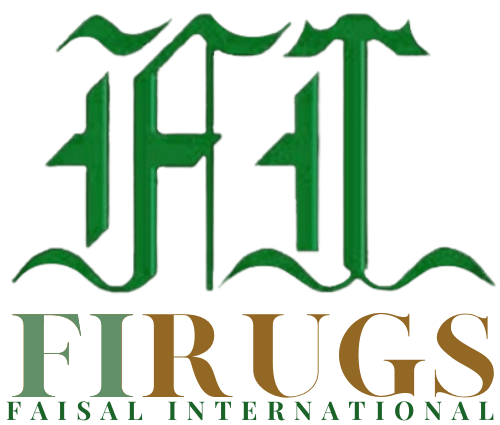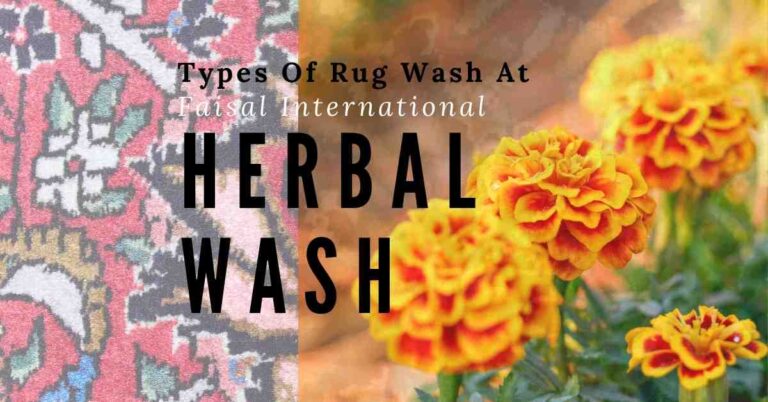
Table of Contents
Types Of Rug Wash At Faisal International
From Rug Manufacturers End
All wool rug fibers at Faisal International are custom dyed using AZO-free dyes. This process is carried out by the dye master, who uses a tiny quantity of colored pigments to create a perfect color match. All this is done by continually keeping a very close eye.
It takes about a day to each dye, so more colors are included in our rug pattern. It is a process that usually takes a long time.
Here, this article is about the special washing of knotted Persian wool rugs using herbal ingredient by FI Rugs.
Herbal Wash
The Rare - Most Special Wash Rugs Can Receive
Besides the natural rug dying, Faisal International expertise in herbal rug washing as well. FI Rugs are among the very few carpet manufacturers that specialize in handling with herbs on area rugs. Most herbs are unrevealed online, yet tea and marigold are some commonly used.

TEA WASH
In the late nineties, the trend of herbal wash came into practice in India. The treatment of tea-wash on the rug is in the final means of the rug’s finishing process. These types of rug washing with natural ingredients are known as Herbal wash and Antiqued.
Tea wash or herbal dealings are mellifluous by covering them up in an over-dying technique; nevertheless, it debilitates their colors.
Some use chemicals like potassium permanganate or natural dyestuffs to get a tea wash look in the present day. Their process gives an outcome of a brown or gold-tone.
Washing the rug with high-quality tea leaves is not going to have any smell. The carpet can, however, stinks with chemical treatments or dyes. It is possible that sometimes if you use cheap quality tea to wash the rug, they can more or less give an unpleasant smell.
Using a chemical solution to produce a tea-washed impact can be of more significant harm to those sensitive to chemicals. So, we recommend choosing authentic and verified rug producers for herbal wash rugs.
A tea wash rug has an appearance of gold or brown colors. The chemicals fasten to wool, which is superior to cotton, the fringes become quite dull or light brown instead of white.
Therefore, cotton fringes can wash away the tea-wash effect pretty speedily, and later on, the whole part of the rug will start to misplace its tea washed treatment.
Tea wash in an over coloring process produces a beautiful Antique looking rug, or an aged carpet using Henna, tea, or marigold.
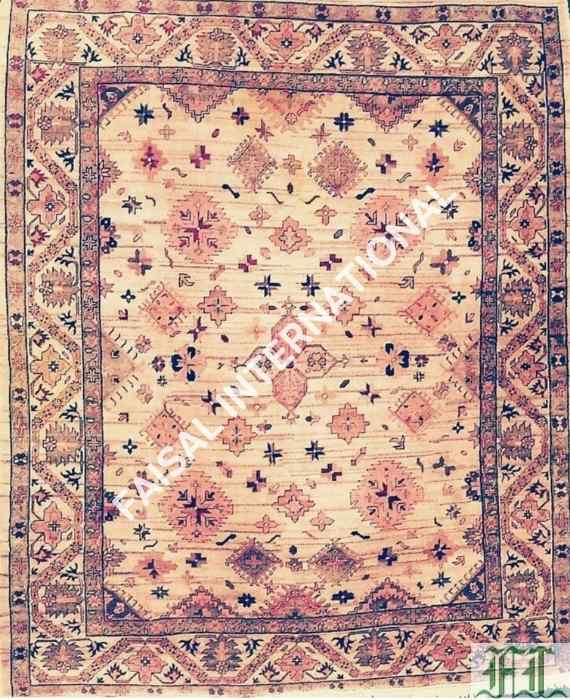

Cons Of Herbal Wash
One should know that the herbal wash effect is not a permanent part of the rug. As the carpet gets older, the wash will become lackluster, washout, or fade with time. The fading happens mostly with lower-end quality rugs.
- Herbal washing is a costly wash type by carpet manufacturers.
- Natural herbal wash is time-consuming with more technical detailing, hence results in higher cost of the rug.
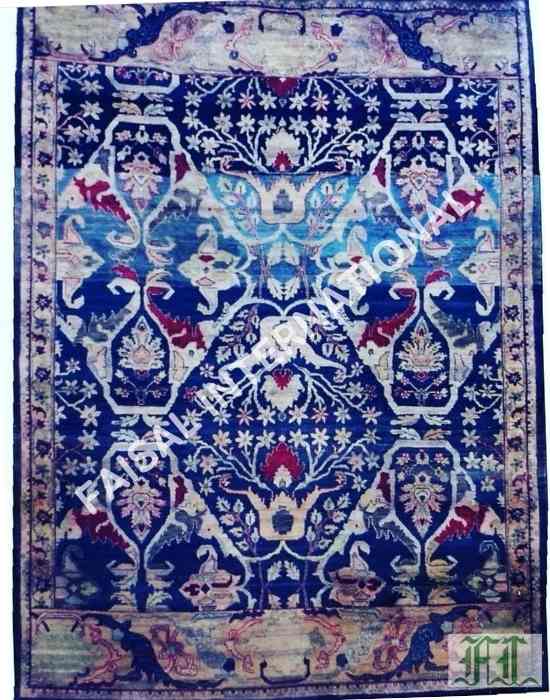
LUSTER WASH
Luster wash is to make a rug more shine, sheen, and to give the feeling of softness to the wool pile. The mixture provides assistance to dematerialize the wool threads’ uppermost surface to imitate more brightness and frailness to feel.
Almost all the rugs are light luster wash, but by giving high-pressure luster, wash treatments are appropriate to produce the carpet’s wool similar to silken or velvety in the same manner as the silk radiates.
It sometimes happens with most rug holders thinking their wool is silk made because of its shimmer and shine.
The wool rugs which give the aspect of silk indicate a massive luster wash. As you will open the thread of fiber yarn by twisting it in its opposite direction, you will find the threads’ foundation much darker than the pointers.
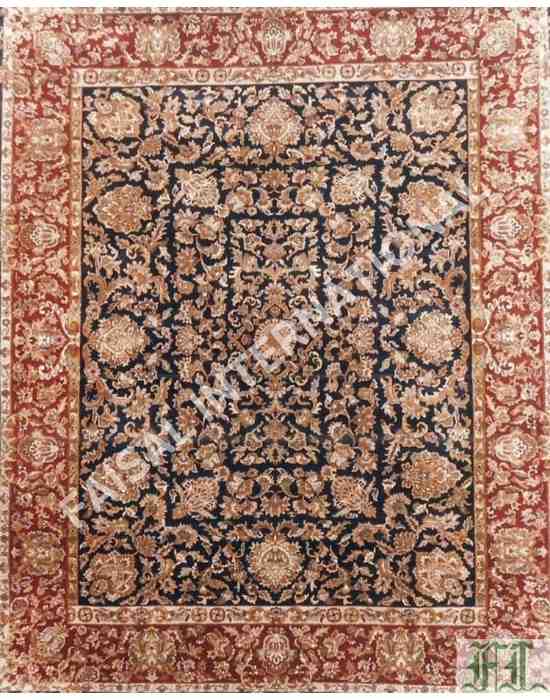
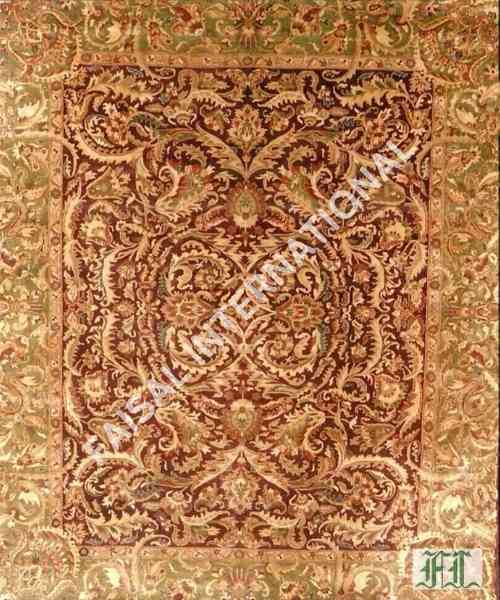
ANTIQUE WASH
If a rug is an antique wash, one can quickly notice the color alteration from the carpet’s back to the anterior.
These techniques are actionable to a rug to contribute to the conception that the carpet is aged, then it authentically exists.
This kind of an assertive treatment to the rug frost away from the wool cuticle layers. By striving for diversion, the patina and flourishing of colors are the genuine antique rugs. The washing is such that the carpet will become faded(toned-down) from its original color combination.
With a more intense antique wash, the wool is more breakable, giving that great antique look to the area rug.
Rug Washing From Rug Manufacturers End
General washing – General types of wash are those that do not include herbal or antique wash techniques. Herbal wash is a special kind of wash that involves washing carpets with herbs; hence they turn out to be more expensive.
Tools For Rug Washing
- Plenty of water
- Shovel
- Hard Bristle Brush
- Vinegar
- Shiner
- Herbs (for herbal wash)
- Light Chemicals ( for general wash)
Process Of Washing
Below are the process of washing rugs in a general way:
Before The Wash
The washing of handmade carpet starts after the rug weaving is complete. The woven rug is cut and removed from the loom.
- the rug gets a complete booming
- the loose knots at the rugs back is tucked
- the back is slightly burned-out to remove unwanted micro-fibers.
During Wash
The rug is continuously splashed with plenty of buckets of water that got from a built low leveled water tank. Rinsing with a flood of water makes the water reach to every corner of the rug.
Next, different ingredients are put in a large bucket and poured throughout the rug. The carpet quickly pulls in the solution within itself as the rug was sufficiently submerged in the water already.
Using a vital tool such as a specially designed shovel, let’s remove form and water from the carpet.
3 Reason Why A Shovel Is Used In Rug Washing
The shovel used in rug washing is an essential tool. The specially designed shovel is generally different from other shovels used to dig the earth or scoop things.
The shovel used in cleaning the rugs is different. It is flat with sharper edges like a blade. The shovel helps in:
- Thrashing out the wash water while washing.
- Beating the shovel against the rug’s surface enables dragging all loose threads, dirt, and excessive yarn hair.
- Shovelling the carpet repeatedly also helps soften the fiber by removing debris, etc.
